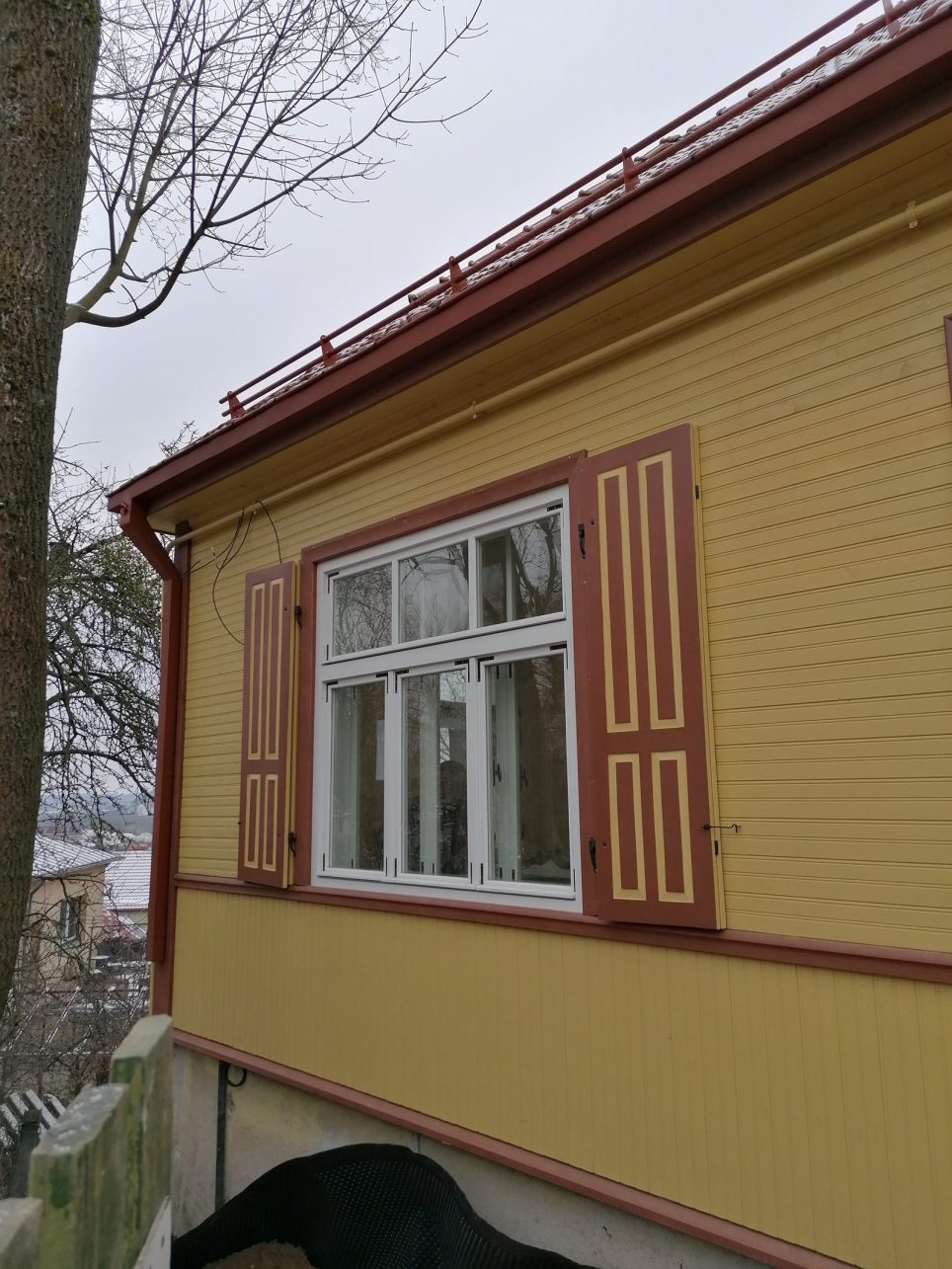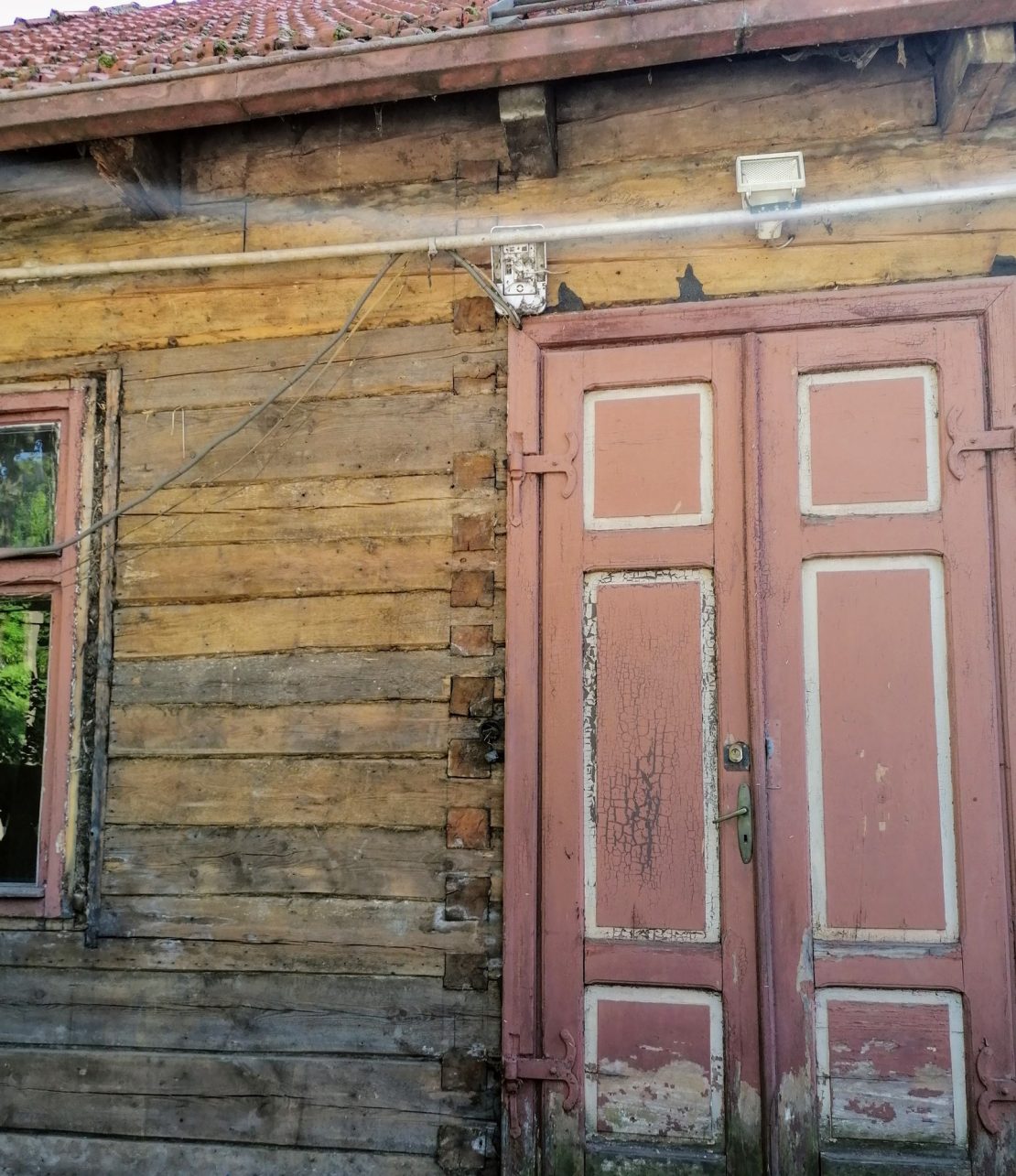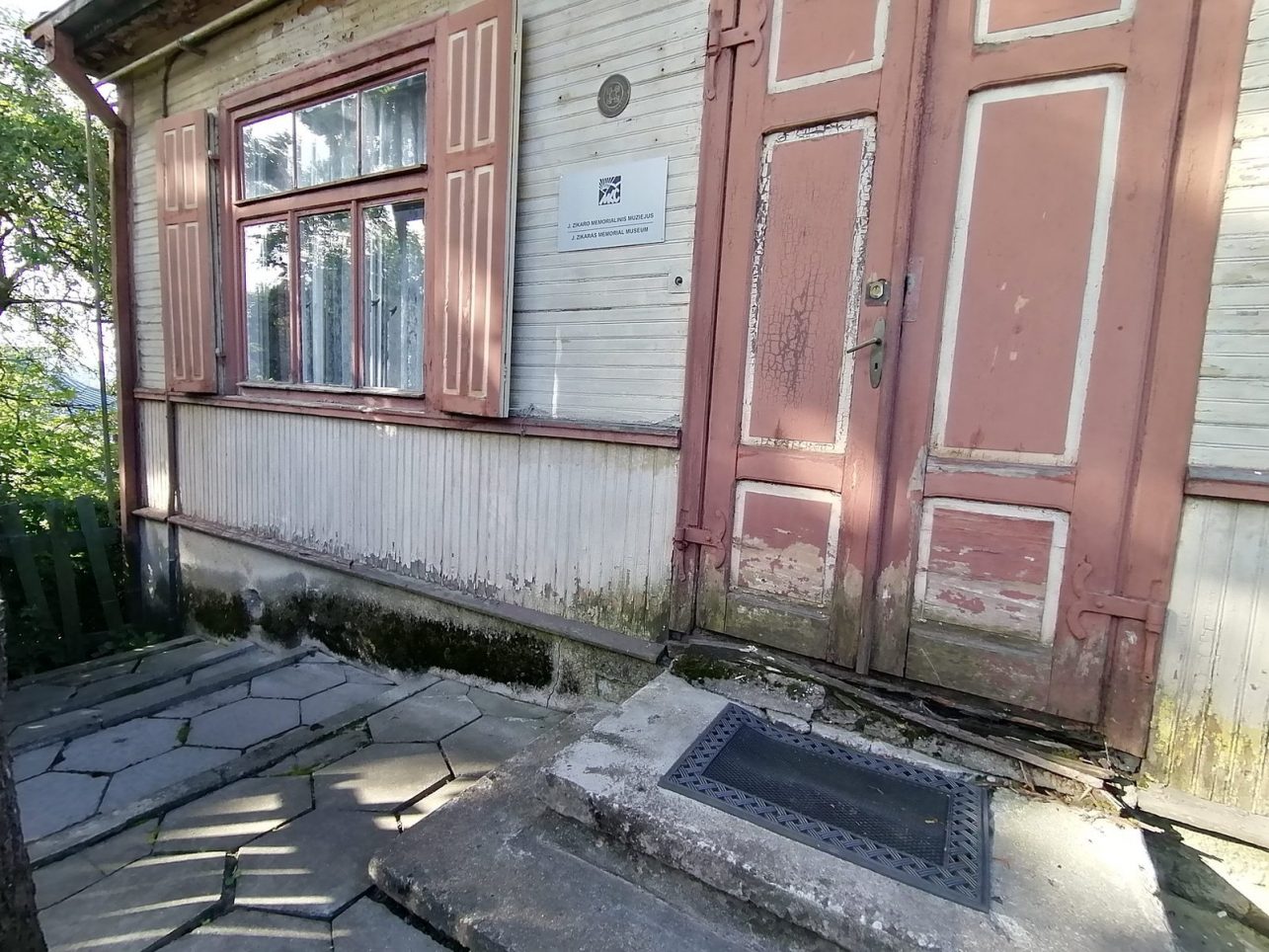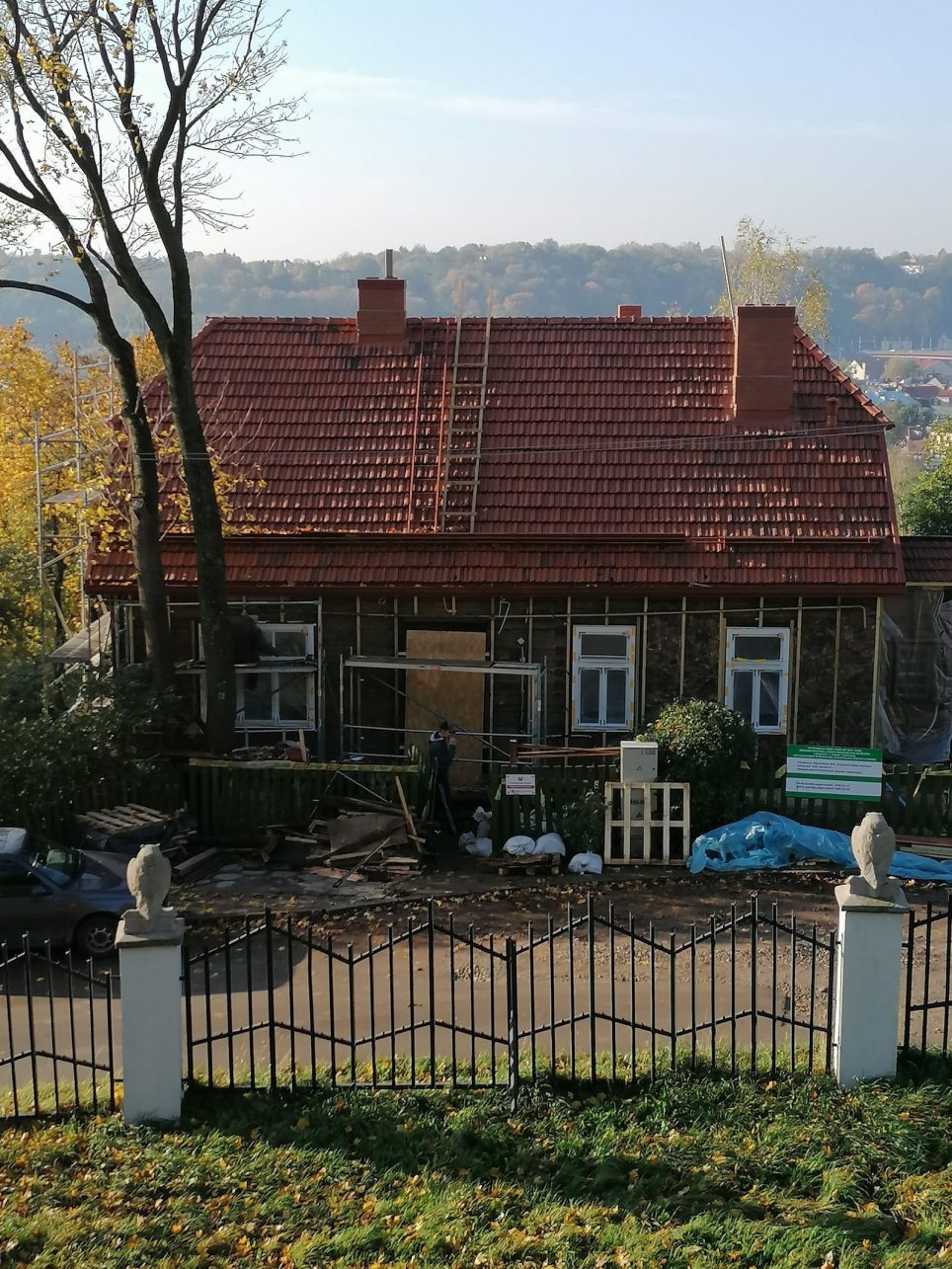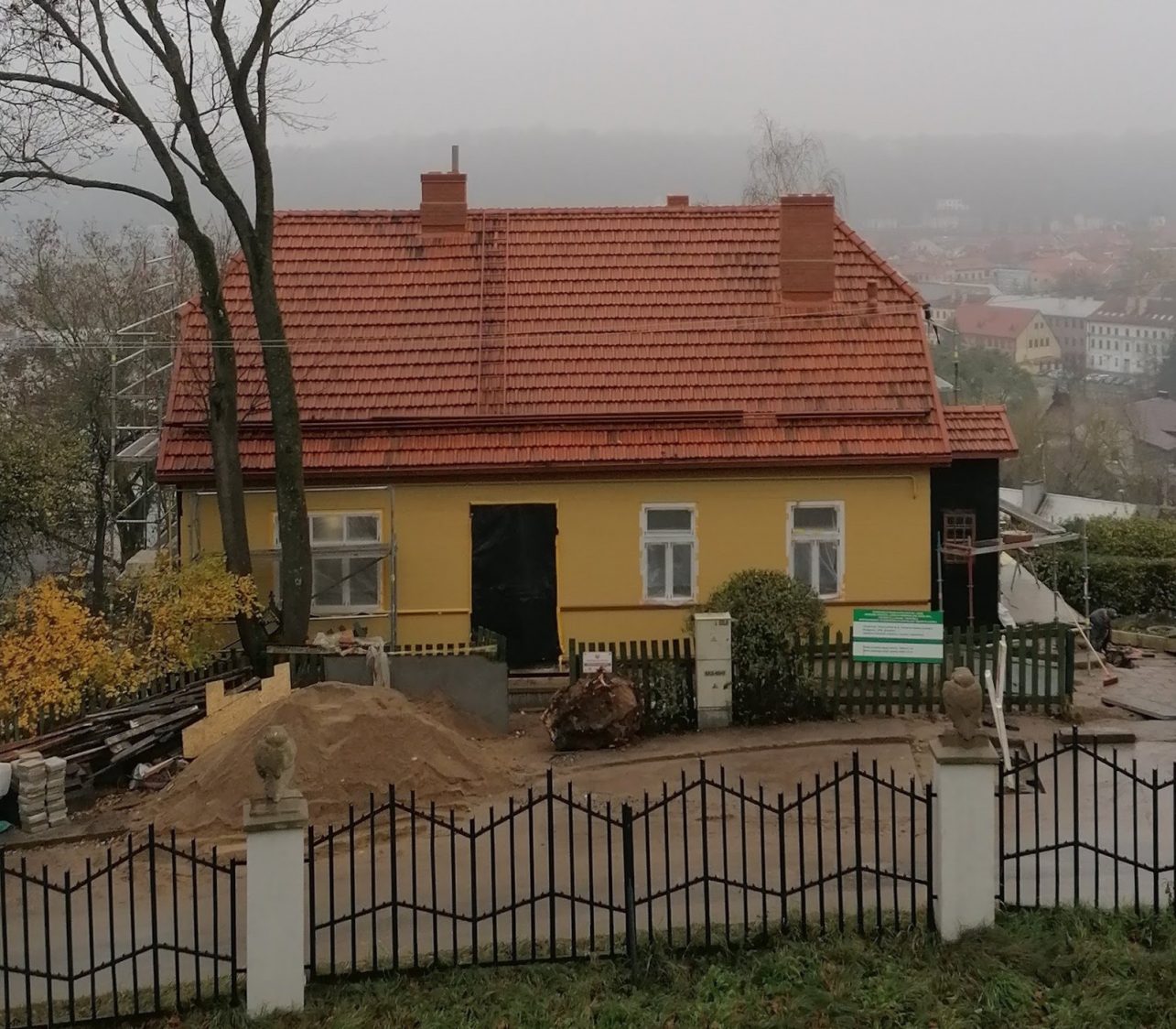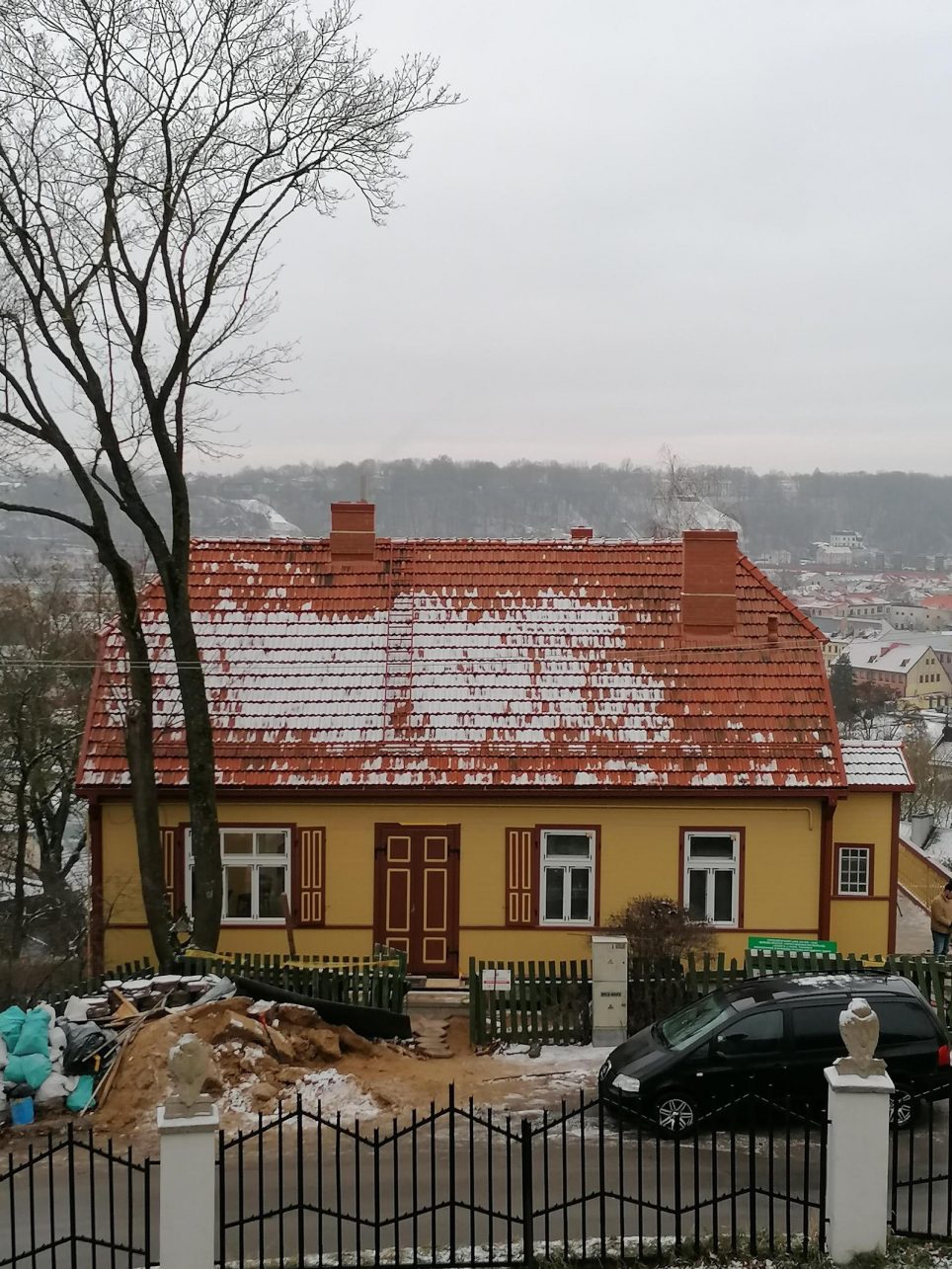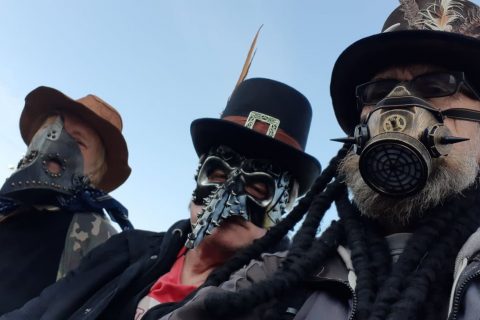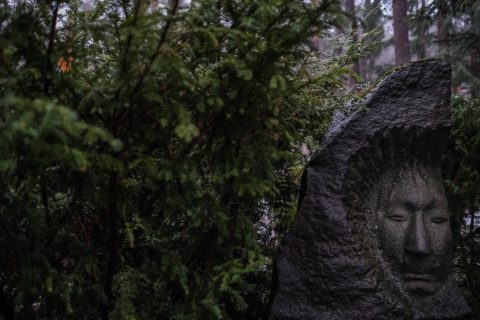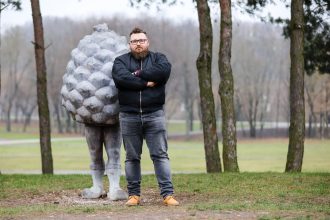In 1922, in the spot that allows you to see the whole city, an art school emerged, as an academic Parthenon, which was the start of contemporary Lithuanian art education. As if to protect their sanctuary from adversity, the artists at that time fenced off with a massive iron fence of the Kaunas Fortress, and sculptor Vincas Grybas placed the owls, which provided the nickname for the whole neighbourhood, on the supporting pillars. However, there are more structures than Parthenon on Acropolis Hill, and the same goes for the mansions of Kaunas. So, this time, we will not be writing about the school but about something that is inextricably linked to it, albeit on the other side of the fence. A seemingly modest house with an art studio was built here in the early 1930s by Juozas Zikaras, the patriarch of the 20th-century Lithuanian sculpture, a lecturer, and a public figure. He was the man who gave us more than one precious symbol of statehood. His Freedom still looks at all Kaunas residents from the garden of the War Museum every day, and the modern interpretation of the Lithuanian coat of arms still adorns our coins. Rasa Jonė Ruibienė, the head of Juzoas Zikaras Memorial Museum and a dedicated patron of the sculptor’s memory, will tell us about many historical whirlwinds that both the house and its owners had been caught in and how it was possible to preserve this place for future generations.
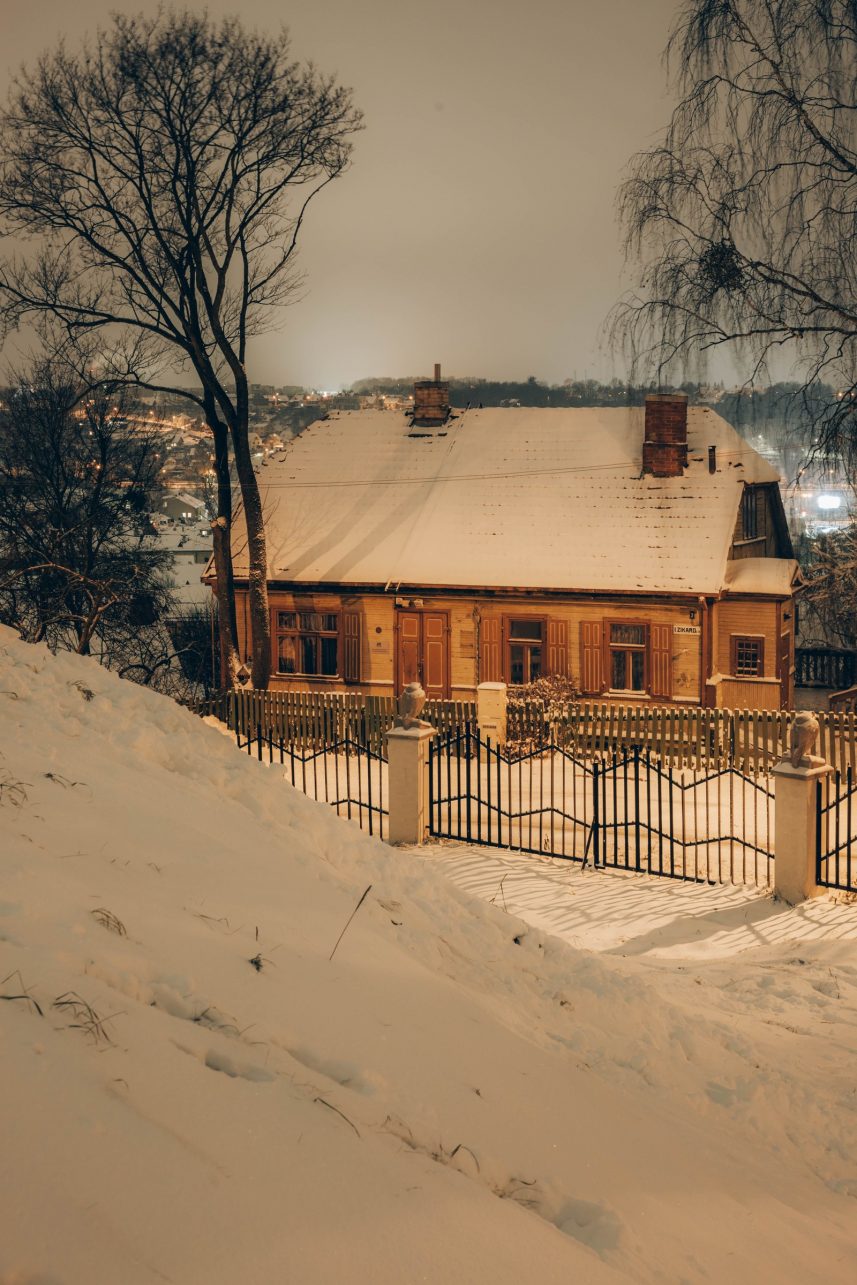
The museum’s doors are currently closed. Not only due to, let’s say, fashionable circumstances this year, but also because in preparation for the 140th anniversary of J. Zikaras, each detail of the house is being cared for by restorers. In February, or at the latest in March, the team of restorers will be replaced by returning exhibits. “The house will be just like it was when J. Zikaras entered it with his family in May 1933. We try to leave even the locks or electrical switches, every little detail because the sculptor oversaw the construction of the whole house, from switch to switch,” the head of the museum rejoiced. “From the very beginning, it reflected the modern approach of J. Zikaras. The building was constructed with a bathroom, which was a novelty back then. And the floor of two rooms still has Marmoleum flooring, which was also a novelty at the time.”
Indeed, in the background of the ever-changing Žaliakalnis, the house remains a constant of the true spirit of the neighborhood, a canon, the facades of which will never be covered in plastic panels and the roof lines will not be lifted by bulkheads. The potential of such authenticity was also emphasized to us by R. J. Ruibienė, who was glad that the building will be interesting not only for those interested in Zikaras’ personality, his work, or historical figures who had once visited the house but for architecture enthusiasts as well. This is sort of confirmed by the museum creator’s story about the first group of visitors, which came after the official opening of the museum in 2001. “These were Norwegians, who are crazy about wooden houses. They really appreciated the authenticity of Zikaras house, but they were a bit sad that the window-moving mechanisms were painted over. Now, these have regained their original look.”
And yet, the most important part of every house is not its shape but its inhabitants. Especially when the circumstances allowed the interior to be preserved just as it was when the sculptor and his family and their distinguished guests were enjoying it. Right next to Zikaras’ works, there are sofas, where Sofija Smetonienė and Jonas Basanavičius sat when visiting the hosts, and a unique piano, although in need of serious restoration, that was played by the whole family. The atmosphere that welcomes the visitor is almost the same as the one that inspired the most fruitful years of the artist. The museum’s collection is also impressive. It contains the first project of the Freedom pedestal and coin collection of the national currency (litas), the design created by J. Zikaras, busts of important personalities of Lithuanian history, and models of the sculptor’s works that can be found all over Lithuania. The museum is especially proud of the original Grand Prix of the 1937 Paris annual international exhibition, which the sculptor received for the model of a Lithuanian homestead. Let these be hints that will encourage our readers to visit the museum after reconstruction – they are only a small part of the treasures that await you here. In addition, the head of the museum promised that something quite intriguing, that was previously hidden in the fonds, will be exhibited for the viewers’ pleasure.
J. Zikaras’ life ended tragically in 1944, after the third interrogation by Soviet security officers. The latter unjustifiably accused the sculptor’s sons of withdrawing to the forest to fight the regime. Meanwhile, the sculptor thought they had died. No one knew at the time that three out of four children ended up in the West. R. J. Ruibienė also told us about the difficult post-war years. The sculptor’s widow Anelė and the only daughter Alytė, who stayed in the house, faced the slovenliness of foreign army officers, who were moved there. “Zikarienė’s heart was breaking when she saw a mess in her well-groomed house. They would break water taps and clog toilets.” Later on, the officers moved into newly acquired apartments, and the women dealt with the bad post-war financial situation by renting part of the premises to students.
It was in these circumstances, perhaps in a somewhat ironically unexpected turn of history, that the house encountered another, albeit still a future figure in the country’s history. Since 1951, brothers Algirdas and Gerardas, who studied at Kaunas Polytechnic Institute, lived in Zikaras’ house living room for 5 years. The first of them was destined to become the de facto head of occupied Lithuania a few decades later – one of the secretaries of the Communist Party – and after that a President of independent Lithuania. “Zikaraitė’s birthday was on the 20th of February although in principle she always celebrated on the 16th and Algirdas Brazauskas never refused to participate and ask the ladies to dance,” the head of the museum told us about the interesting moment in the future secretary’s life. “He also left an impression on Zikaras’ widow because he was a complete opposite of the Soviet soldiers. He always kept order and left his dirty shoes outside the front door.”
It is the sculptor’s daughter Alytė and her stubbornness that we need to be grateful to for the fact that there are so many works of the sculptor in the memorial museum today. She also managed to save a part of the sculptor’s archive, which A. Zikarienė was ready to burn during the difficult post-war years, fearing repression. “There were not many Zikaras’ works left at home because he was an artist of “if you like it – take it” type,” R. J. Ruibienė smiles. “So, his daughter had to collect his works from all over Lithuania. In 1952, when it became clear that the brothers were alive, albeit overseas, they began sending financial aid to repurchase the works.” The high-mindedness of Zikaraitė’s personality was reflected in the fact that in November 1959 she established an unofficial museum of her father’s works in his former workshop, which is difficult to comprehend in the context of that dreary Soviet period.
And it wasn’t just a creative exposition. It contained a respectfully placed tricolour, busts of priests made by the sculptor, and the Lithuanian litas that he designed. Even though the museum was only for the people the family knew, according to R. J. Ruibienė, in the mid-sixties, the word reached the wrong ears. “One morning there was a knock on the door. This was Janina Narkevičiūtė [then Deputy Chairwoman of the City Executive Committee, who was in charge of cultural issues], who asked, “And what do you keep on the ground floor? I would like to see.” After checking the exposition, she told them to remove this or that, the busts of priests, the old money and said that next week she will bring the delegation from the US to show “the capitalists” that we have private museums too.” Back then, according to the museologist, Zikaraitė was relieved, “Maybe they will not arrest her.” After a successful visit of three Americans, on the occasion of which J. Narkevičiūtė had also organized a feast full of scarce goods, delegations from abroad continued to be brought here. “Although the sculptor’s life ended precisely because of the occupation atrocities, some of Zikaras’ works were suitable for the government at the time to convey the story of the poor peasants. The Soviet government itself did not contribute to the museum, but it did not demolish it either,” the museologist told us about the positive twist of the first private museum’s fate.
This is how the house and its contents survived to our days. At the end of the 20th century, in the mid-nineties, the sculptor’s daughter transferred the house to the state, by putting it in her testament that she is giving the museum to the M. K. Čiurlionis National Art Museum. R. J. Ruibienė, who supervised the processes of creating the official museum, emphasizes Zikaras’ words that he used to say to his children, “Only you can put yourselves in captivity.” Perhaps General Nagevičius, who delegated to Zikaras to create the Freedom monument, realized that only a person who managed to find his way out of complete poverty that he experienced in his childhood and become a successful artist, could make such a monument.” Indeed, after having heard the story of the survival of the house, one can get the impression that the spirit of freedom inspired by the sculptor has never left it.
ciurlionis.lt

